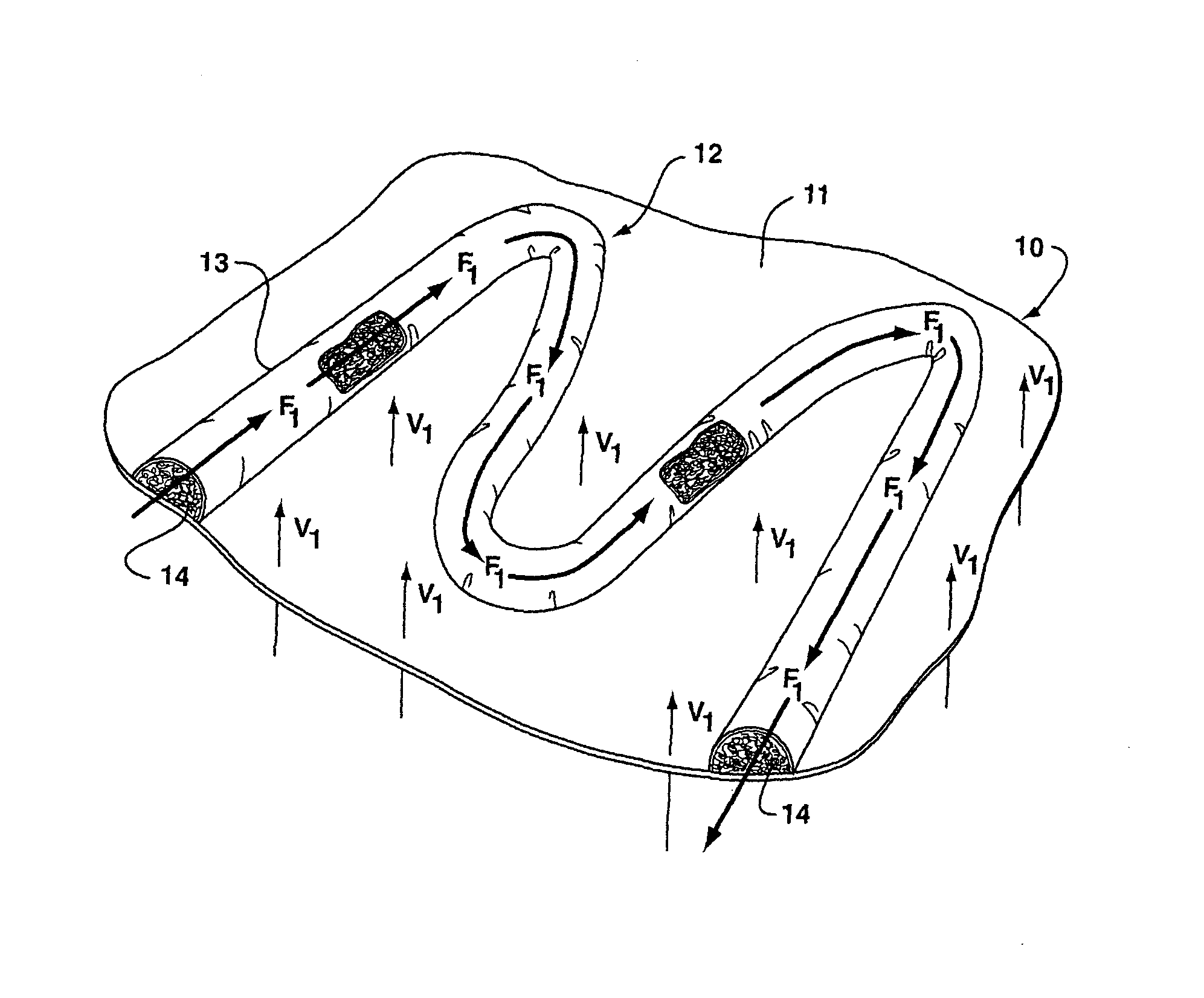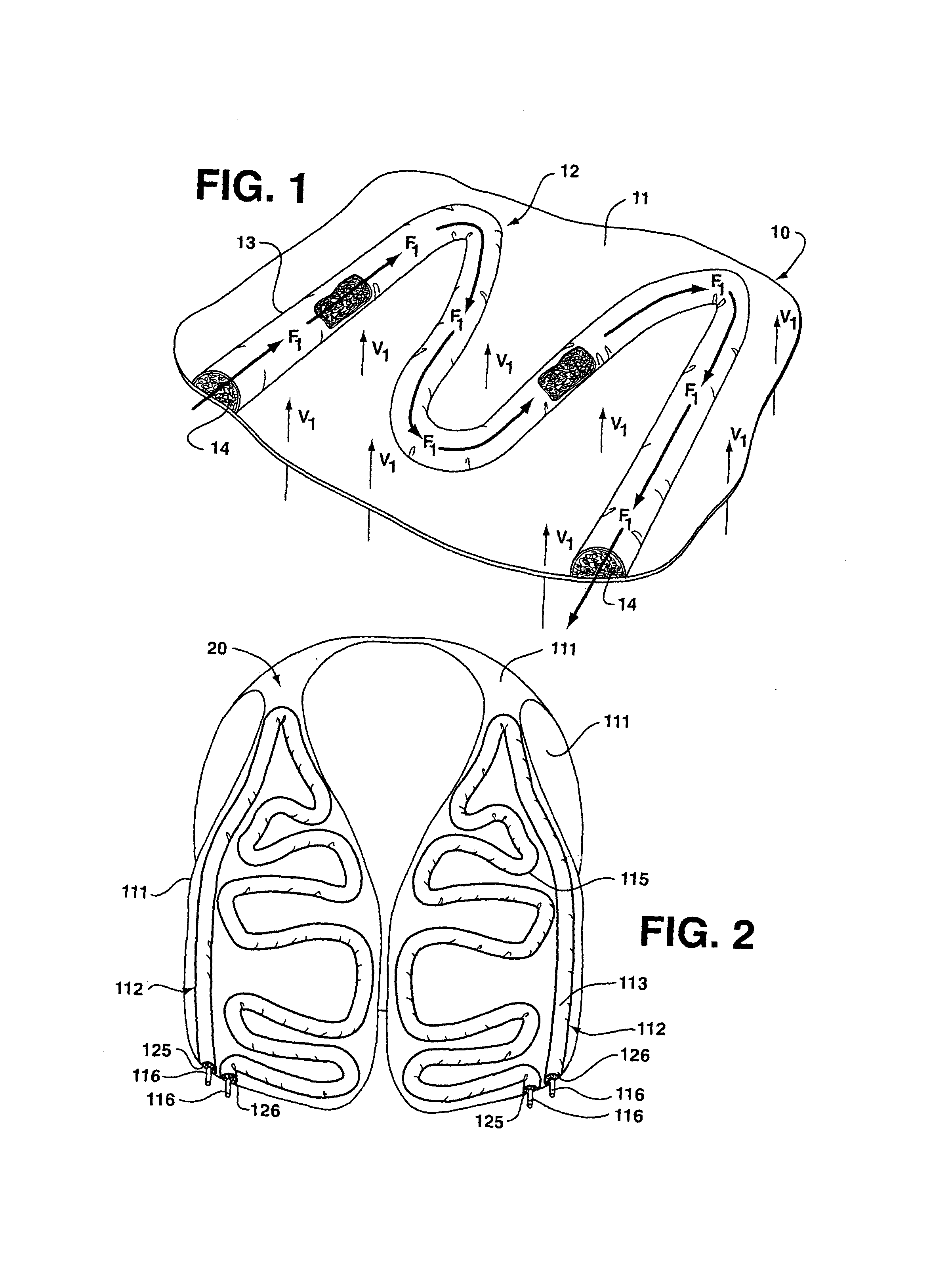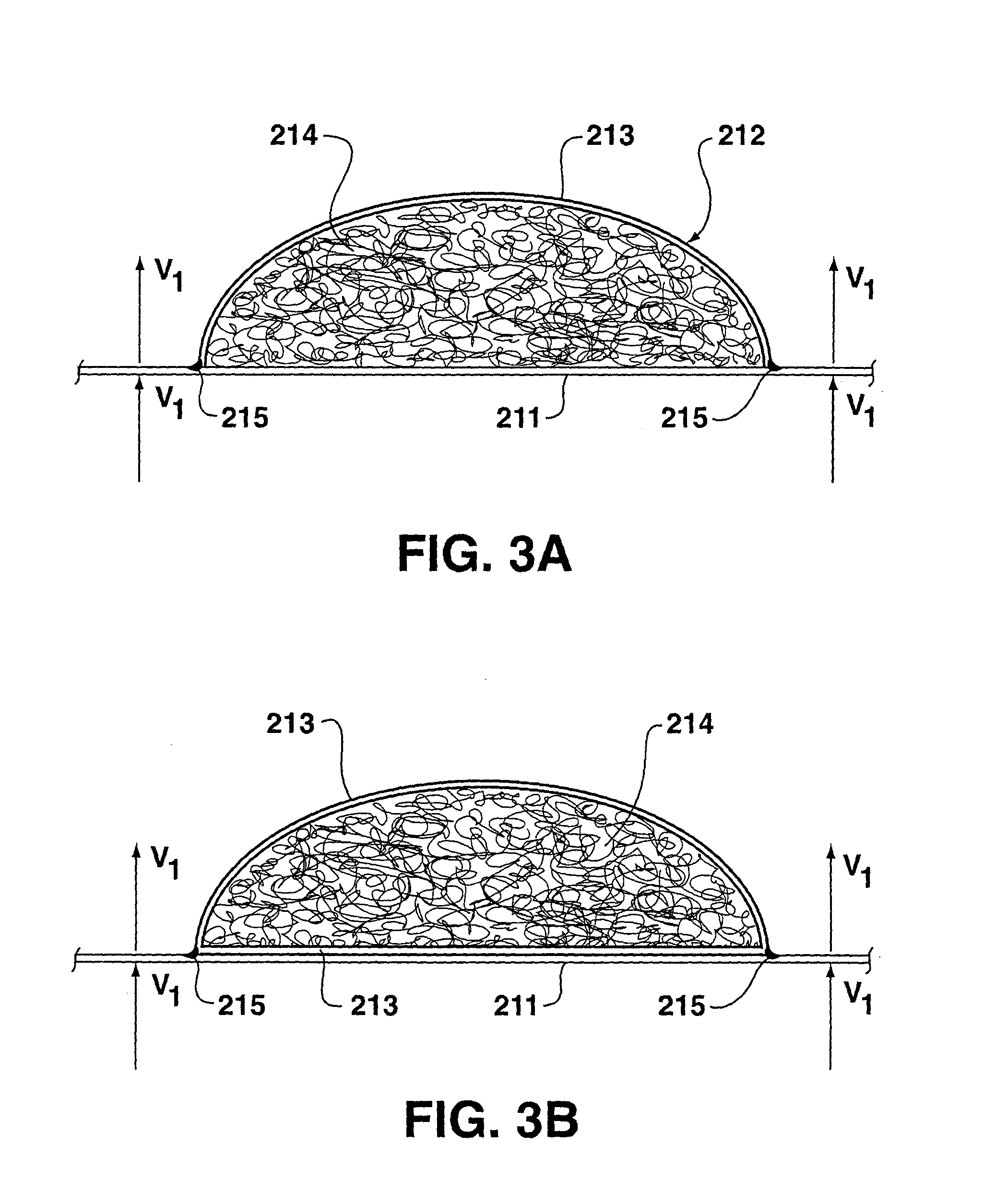Microclimate regulating garment and composite structure
a technology of microclimate and garment, applied in the field of active protective apparel, can solve the problems of garments being more rigid than others, limited breathability of such foam, and limited design utility as a field item, and achieve the effects of preventing the trapping of moisture in the garment, reducing wear cycle time, and high moisture vapor transpor
- Summary
- Abstract
- Description
- Claims
- Application Information
AI Technical Summary
Benefits of technology
Problems solved by technology
Method used
Image
Examples
Embodiment Construction
[0023]Reference will now be made in detail to the presently preferred embodiments of the invention, one or more examples of which are shown in the figures. Each example is provided to explain the invention and not as a limitation of the invention. In fact, features illustrated or described as part of one embodiment can be used with another embodiment to yield still a further embodiment. It is intended that the present invention cover such modifications and variations.
[0024]FIG. 1 illustrates a composite structure 10 representing an embodiment of the present invention. Preferably, the composite structure 10 is a composite fabric. Composite structure 10 has a first substrate layer 11. At least one enclosed passageway 12 is formed by attaching an outer cover material 13 to first substrate layer 11 in a pattern over first substrate layer 11. The outer cover material 13 creates at least part of the walls of the passageways. The walls of passageway 12 contain a filler material 14 within t...
PUM
| Property | Measurement | Unit |
|---|---|---|
| Acoustic impedance | aaaaa | aaaaa |
| Flow rate | aaaaa | aaaaa |
| Structure | aaaaa | aaaaa |
Abstract
Description
Claims
Application Information
 Login to View More
Login to View More - R&D
- Intellectual Property
- Life Sciences
- Materials
- Tech Scout
- Unparalleled Data Quality
- Higher Quality Content
- 60% Fewer Hallucinations
Browse by: Latest US Patents, China's latest patents, Technical Efficacy Thesaurus, Application Domain, Technology Topic, Popular Technical Reports.
© 2025 PatSnap. All rights reserved.Legal|Privacy policy|Modern Slavery Act Transparency Statement|Sitemap|About US| Contact US: help@patsnap.com



